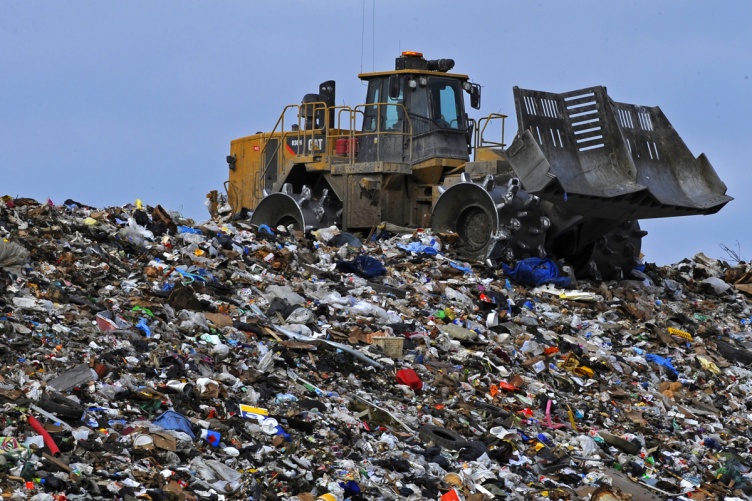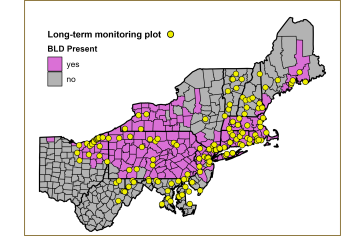
Towns that have implemented pay-as-you-throw and other user fee-based pricing policies to reduce municipal solid waste have seen a substantial reduction in trash disposal rates, some by more than 50 percent, according to new research from the New Hampshire Agricultural Experiment Station at the University of New Hampshire.
“Households respond to economic incentives. With unit-based pricing, the cost to the household may increase to dispose of trash, but the incentive to recycle is greater,” said experiment station researcher John Halstead, professor of natural resources and the environment.
Researchers evaluated the impact of municipal solid waste disposal programs for 180 towns in New Hampshire that account for 90 percent of the state’s population. Of the 180 towns, 34 had pay-as-you-throw trash disposal programs, which commonly require households to buy and use specially designated plastic garbage bags. Other types of programs require households to purchase designated adhesive stickers to place on commercially sold trash bags.
Researchers found that the 34 towns with trash unit-based pricing fees saw municipal waste disposal rates drop between 42 to 54 percent, compared to towns without such programs. This represents an annual reduction of household waste of 631 to 823 pounds of trash. The average annual household waste of towns without unit-based pricing fees was 1,530 pounds of trash.
Towns with pay-as-you-throw programs had lower median household incomes, higher residential property tax rates, and higher home values in comparison with towns without such programs.
“When waste disposal is financed with property taxes, disposal costs for households with more trash are subsidized by households disposing of less trash. When cities and towns adopt unit-based pricing, households that generate less waste will pay less than households that generate more waste. Thus, these types of user-fee programs appeal to households that actively practice recycling,” Halstead said.
Municipal solid waste management costs account for an increasing share of local governmental expenditures. The cost increase is attributed to rising levels of per-capita waste disposal, growing populations, and increasing costs of collecting, transporting, and disposing of solid waste. In addition, for many communities, solid waste is being transported longer distances to larger regional landfills and incinerators, as local smaller landfills reach capacity.
As a result, local governments and solid waste managers are evaluating alternative municipal solid waste management programs and pricing schedules. Cities and towns are increasingly adopting the user-fee model, which is a significant departure from the conventional practice of financing solid waste collection using property tax revenues.
“When waste disposal services are financed from general tax revenues, households incur no direct cost for municipal solid waste services. The marginal cost for each additional unit of trash disposed is zero. If households are required to use designated trash bags for waste disposal, the marginal cost is the sale price of the trash bag,” Halstead said.
Prices vary across municipalities and typically range from $1 for a 15-gallon trash bag to $2 for a 30-gallon trash bag, with a 30-pound weight limit.
Nationally, cities and towns started adopting unit-based pricing programs in the 1970s. By the mid-2000s, approximately 25 percent of the United States population disposed their trash using some form of a pay-as-you-throw solid waste management program, including large metropolitan areas such as San Francisco, Seattle, and San Jose.
This research is presented in the journal Agricultural and Resource Economics Review in the article “Estimating Treatment Effects of Unit-Based Pricing of Household Solid Waste Disposal” (DOI: doi.org/10.1017/age.2018.2) In addition to Halstead, this research was conducted by Ju-Chin Huang, professor of economics at UNH, and Christopher Wright, adjunct professor at Montana State University.
This material is based upon work supported by the NH Agricultural Experiment Station, through joint funding of the National Institute of Food and Agriculture, U.S. Department of Agriculture, under award number 1015411, and the state of New Hampshire.
Founded in 1887, the NH Agricultural Experiment Station at the UNH College of Life Sciences and Agriculture is UNH’s original research center and an elemental component of New Hampshire's land-grant university heritage and mission. We steward federal and state funding, including support from the USDA National Institute of Food and Agriculture, to provide unbiased and objective research concerning diverse aspects of sustainable agriculture and foods, aquaculture, forest management, and related wildlife, natural resources and rural community topics. We maintain the Woodman and Kingman agronomy and horticultural research farms, the Macfarlane Research Greenhouses, the Fairchild Dairy Teaching and Research Center, and the Organic Dairy Research Farm. Additional properties also provide forage, forests and woodlands in direct support to research, teaching, and outreach.
-
Written By:
Lori Tyler Gula, PhD | NH Agricultural Experiment Station | lori.gula@unh.edu | 603-862-1452

















































